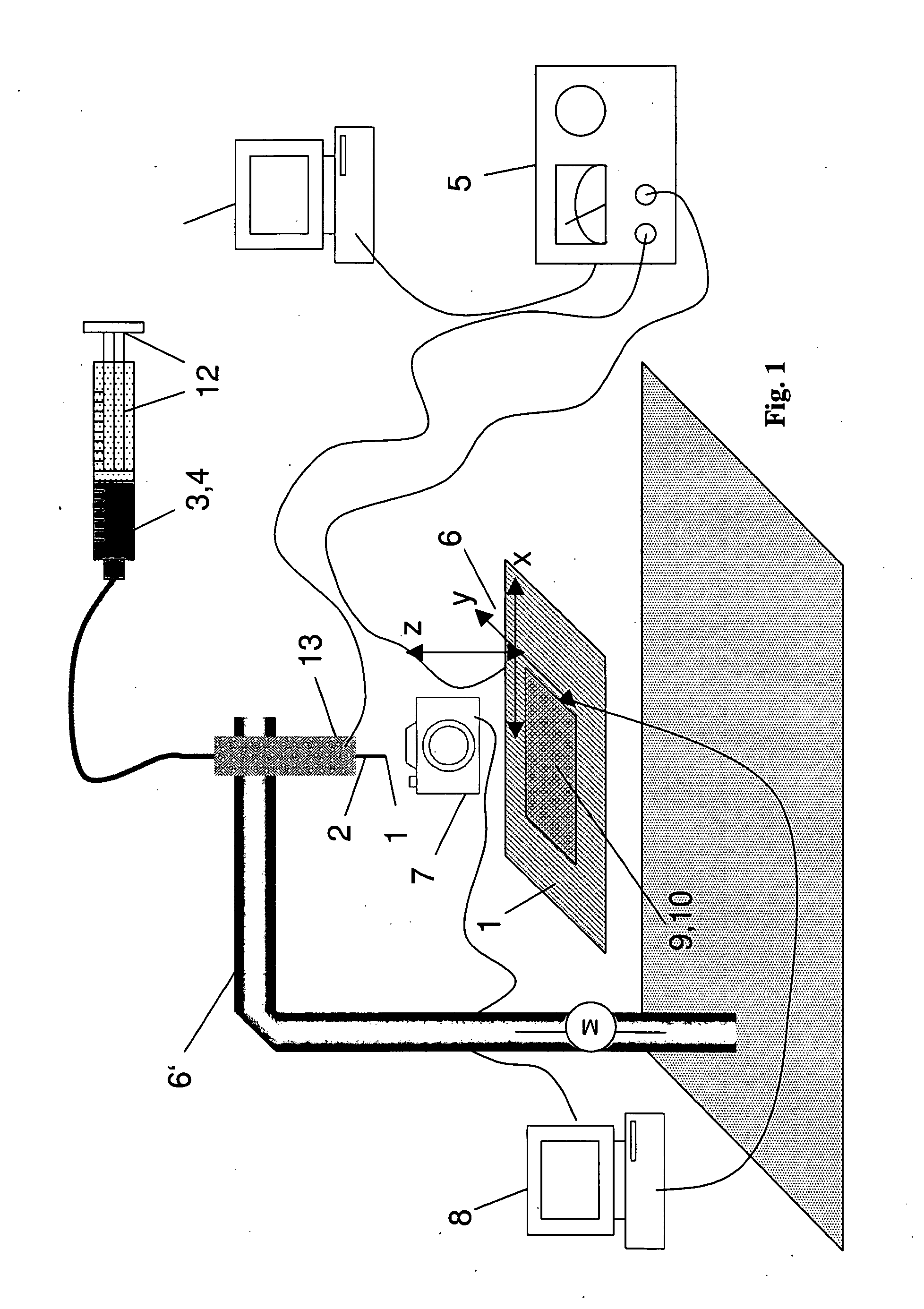Apparatus and method for producing electrically conducting nanostructures by means of electrospinning
a technology of electrical conductivity and electrospinning, applied in the direction of coating, filament/thread forming, fibre treatment, etc., can solve the problems of inability to achieve optical transparency and gloss in this connection, inability to achieve optical transparency and gloss in general, and inability to achieve optical transparency and gloss in practi
- Summary
- Abstract
- Description
- Claims
- Application Information
AI Technical Summary
Benefits of technology
Problems solved by technology
Method used
Image
Examples
example 1
Conducting Nanostructures with Carbon Nanotubes
[0050]The following apparatus (see FIG. 1) was used for spinning the spinning solution:
[0051]The holder 1 for the substrate 9, which is a silicon disc, and the metallic holder 13 for the spinning capillary 2, which is provided with a liquid reservoir 3 for the spinning solution 4 and is connected to an electrical voltage supply 5. The voltage source 5 supplies D.C. voltage up to 10 kV. The spinning capillary 2 is a glass capillary with an internal diameter of 100 Mm. The controllable adjustment motor 6 serves to move the spinning capillary 2 and the adjustment motor 6′ serves to move the substrate holder 1 relative to one another so as to adjust the distance between them. The camera 7 is trained on the outlet of the spinning capillary 2 so as to follow the spinning procedure and is connected to a computer 8 with image processing software for evaluating the image data provided by the camera. The drive of the motor 6′ of the substrate hol...
PUM
| Property | Measurement | Unit |
|---|---|---|
| width | aaaaa | aaaaa |
| width | aaaaa | aaaaa |
| internal diameter | aaaaa | aaaaa |
Abstract
Description
Claims
Application Information
 Login to View More
Login to View More - R&D
- Intellectual Property
- Life Sciences
- Materials
- Tech Scout
- Unparalleled Data Quality
- Higher Quality Content
- 60% Fewer Hallucinations
Browse by: Latest US Patents, China's latest patents, Technical Efficacy Thesaurus, Application Domain, Technology Topic, Popular Technical Reports.
© 2025 PatSnap. All rights reserved.Legal|Privacy policy|Modern Slavery Act Transparency Statement|Sitemap|About US| Contact US: help@patsnap.com


